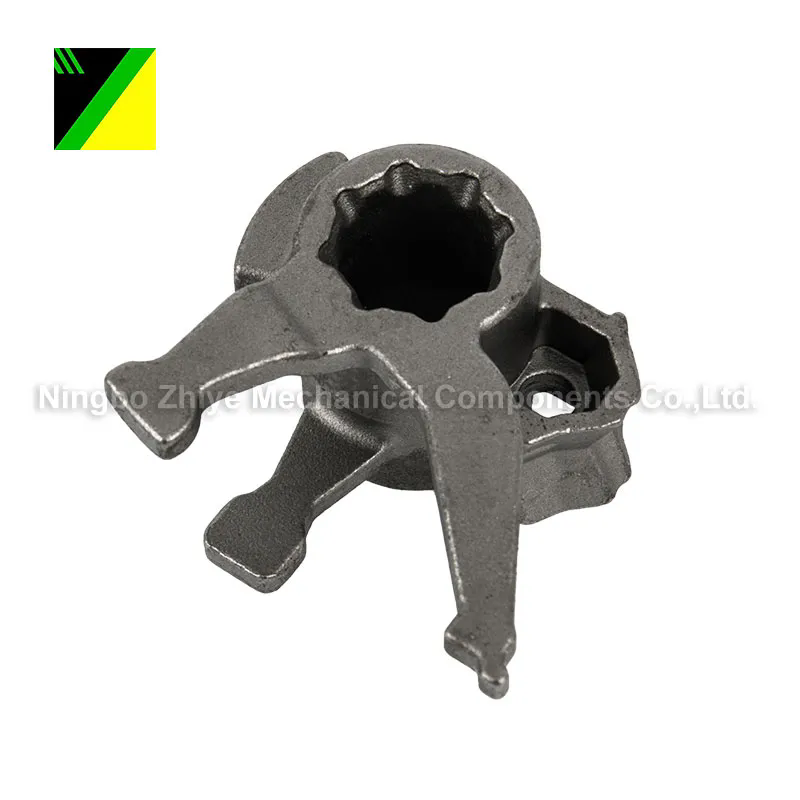A Complete Guide to Silica Sol Investment Casting
2024-10-18
Silica sol investment casting is a precision casting process widely used in industries requiring complex and high-quality metal components. Known for its ability to produce intricate shapes with excellent surface finish, it offers several advantages over other casting techniques. In this blog, we’ll explore the silica sol investment casting process, its benefits, applications, and how it compares with other manufacturing methods.
What is Silica Sol Investment Casting?
Silica sol investment casting is a type of lost-wax casting process. In this method, a ceramic mold is created using silica sol, a colloidal solution of silica particles. The process allows for the casting of metal parts with superior surface finish, dimensional accuracy, and thin walls—making it ideal for producing precision components.
The term “investment” refers to coating the wax patterns with a refractory material to form the mold, which is later removed by melting or burning.
How the Silica Sol Investment Casting Process Works
1. Pattern Creation
- Wax patterns are made by injecting molten wax into a metal mold. The wax models replicate the final component’s shape.
2. Assembly of Wax Patterns
- Individual wax patterns are attached to a central sprue to create a wax tree. This setup allows multiple parts to be cast simultaneously.
3. Coating with Silica Sol
- The wax tree is repeatedly dipped into a ceramic slurry made with silica sol. After each dip, a layer of refractory material is applied.
- The process is repeated several times to build a thick, durable mold.
4. Dewaxing
- The wax is melted out using a steam autoclave or oven, leaving behind a hollow ceramic mold.
5. Pre-heating the Mold
- The ceramic mold is heated to remove any residual wax and strengthen the shell.
6. Metal Pouring
- Molten metal (e.g., stainless steel, carbon steel, or aluminum) is poured into the pre-heated ceramic mold.
7. Cooling and Shell Removal
- After the metal solidifies, the ceramic mold is broken away, revealing the cast metal parts.
8. Finishing
- The metal parts are cut from the sprue, cleaned, and undergo final treatments like grinding, polishing, or heat treatment to meet the desired specifications.
Benefits of Silica Sol Investment Casting
1. High Precision and Dimensional Accuracy
- Produces complex components with tight tolerances, minimizing the need for machining.
2. Excellent Surface Finish
- Silica sol creates smooth ceramic molds, resulting in castings with low surface roughness.
3. Design Flexibility
- Can produce intricate shapes, thin walls, and internal structures that are difficult to achieve with other methods.
4. Wide Range of Materials
- Suitable for a variety of metals, including stainless steel, carbon steel, aluminum, and superalloys.
5. Reduced Material Waste
- Near-net-shape production minimizes material waste, reducing production costs.
6. Batch Production Efficiency
- Multiple parts can be cast simultaneously on a single wax tree, increasing efficiency for mass production.
Applications of Silica Sol Investment Casting
Silica sol investment casting is popular in industries where precision, strength, and surface finish are essential.
- Aerospace
- Turbine blades, engine components, and structural parts.
- Automotive
- Turbocharger housings, transmission parts, and exhaust system components.
- Medical
- Surgical instruments, dental implants, and prosthetic components.
- Industrial Machinery
- Valves, pumps, and machine parts requiring durability and precision.
- Military and Defense
- Weapon components, aircraft parts, and marine hardware.
Challenges in Silica Sol Investment Casting
1. Higher Production Costs
- The process involves multiple steps and skilled labor, making it more expensive than other casting methods.
2. Time-Consuming Process
- Building the ceramic mold takes time, especially for complex parts requiring multiple layers.
3. Material Limitations
- Although versatile, some metals with extremely high melting points may not be suitable for this process.
Choosing the Right Foundry for Silica Sol Investment Casting
When selecting a manufacturer, consider the following factors:
1. Experience and Expertise
- Look for a foundry with experience in casting your required materials and components.
2. Quality Control
- Ensure the foundry follows industry standards and certifications, such as ISO or ASTM.
3. Production Capacity
- Choose a supplier that can handle your production volume, whether it’s a small batch or large-scale production.
4. Lead Time and Delivery
- Discuss production timelines and ensure the foundry can meet your deadlines.
5. Customer Support
- A reliable supplier will provide technical support, material recommendations, and post-production services.
Conclusion: Why Silica Sol Investment Casting Is a Smart Choice
Silica sol investment casting is a highly effective process for producing precision metal components with exceptional surface finish and dimensional accuracy. Though it involves higher costs and a longer production time, the benefits make it ideal for industries where quality is paramount. Whether you are in aerospace, automotive, or medical manufacturing, this casting method offers the reliability and performance needed to meet demanding standards.



